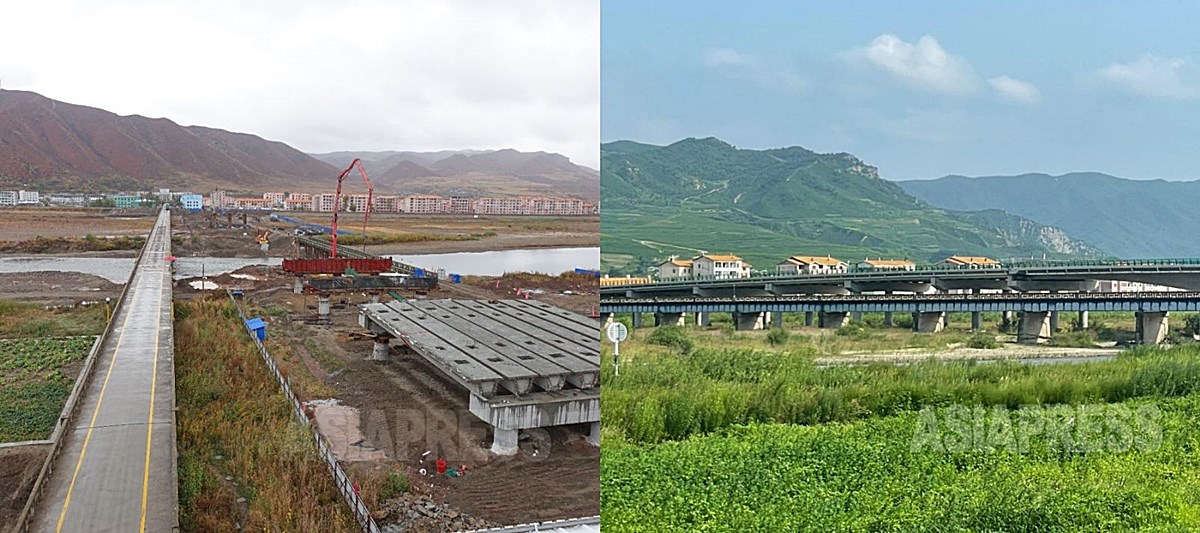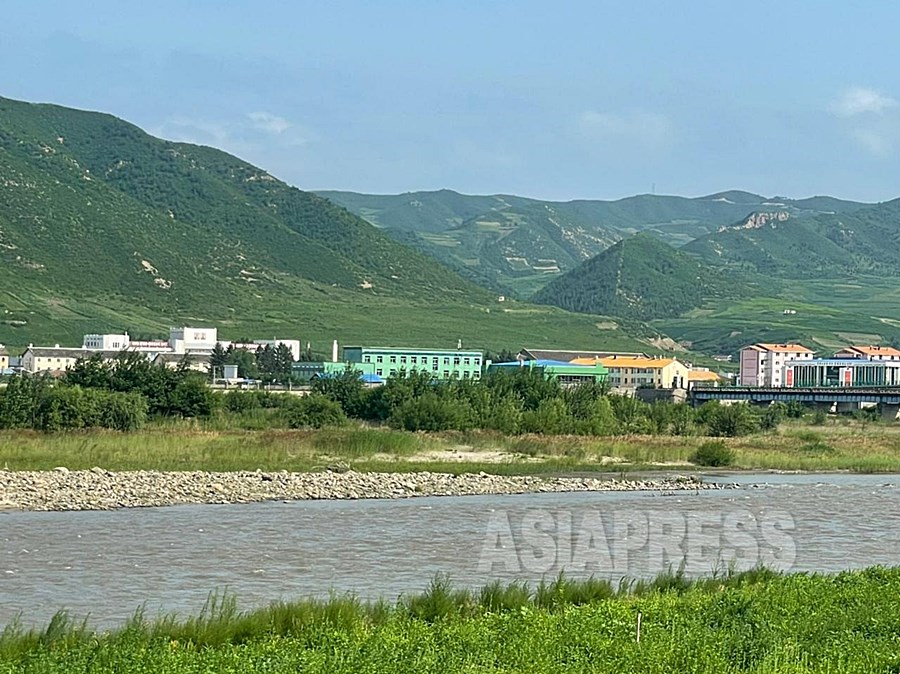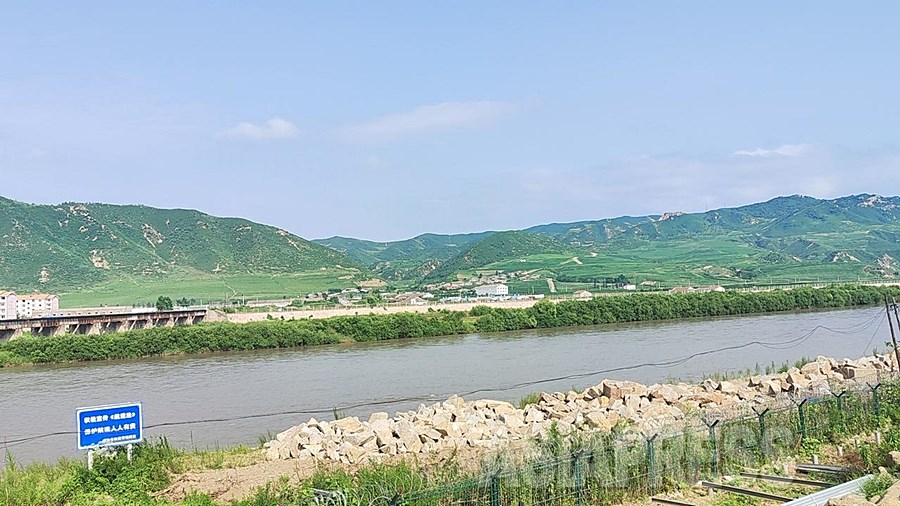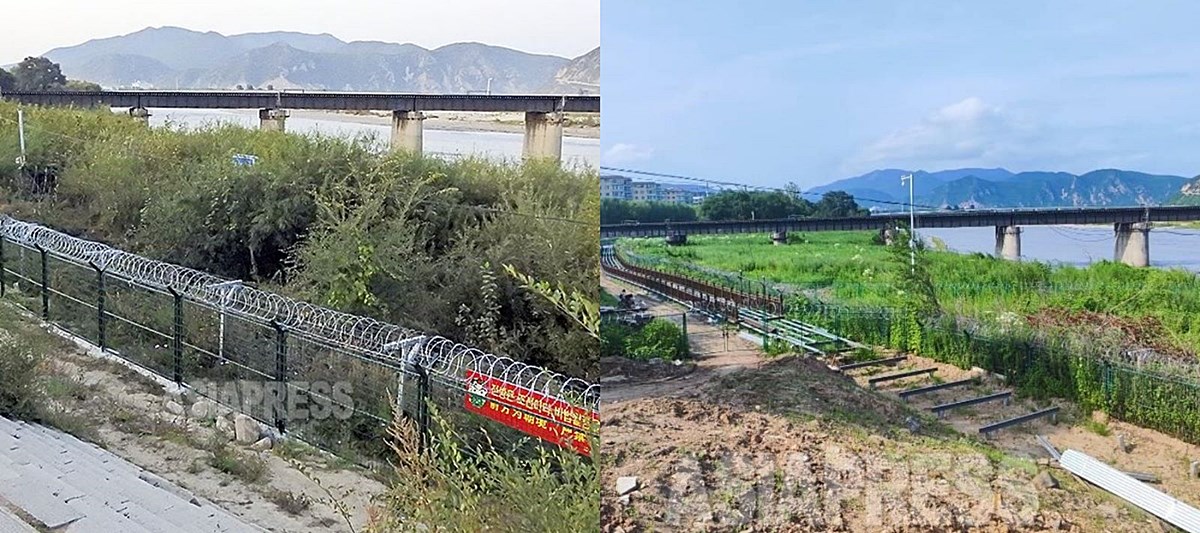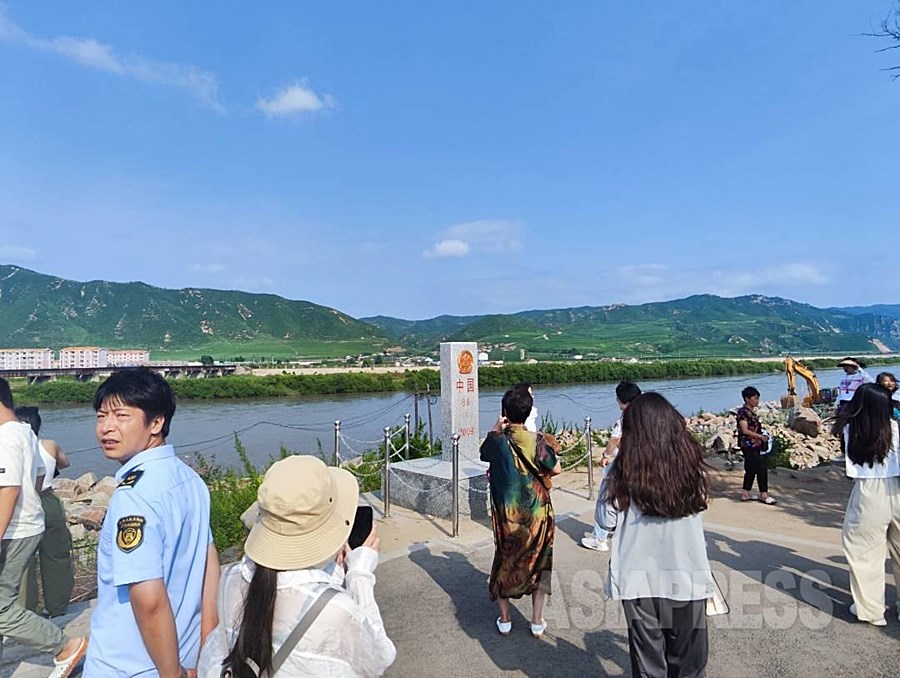
In late July, an ASIAPRESS reporting partner living in China visited the midstream region of the Tumen River on the North Korea-China border. China’s city of Tumen, in the Yanbian Korean Autonomous Prefecture in eastern Jilin Province, and North Korea’s Namyang Laborer District, which is Onsong County, North Hamgyong Province, face each other across the Tumen River. Recently, overland trade began in the trade routes between Sinuiju and Dandong and Nason and Quanhe. The reporting partner provided a report about the present situation at the trade route between Namyang and Tumen. (HAN Ha-yu)
◆ South Koreans banned from entry on bridges used for trade
Tumen provides a route for trade between North Korea and China and is also a tourist spot that attracts a lot of foreigners, including Chinese people, because you can observe North Korea from up close. The reporting partner visited the area in late July and found that many tourists were in the border area in Tumen to observe North Korea.
Tumen and Namyang are connected by the Tumen Bridge, which was built in 1941 by the Japanese when the area was under colonial rule. “Chinese people can walk to the mid-point of the bridge to observe North Korea, but South Koreans are not allowed to do so. They aren’t even allowed to step on the bridge,” the reporting partner told ASIAPRESS.
Moreover, the bridge was constructed so long ago that it is extremely dilapidated. As a result, the Chinese provided funds to start construction on a new bridge in 2016. “The new bridge seems to be completed, but it is blocked at it’s mid-point, and there’s no vehicle or human traffic, so I wasn’t able to see any traces of it being used as a trade route,” the reporting partner said.
◆ The Chinese step up surveillance on the border
In 2013, ASIAPRESS reported on efforts to intensify security along the border with North Korea through the construction of barbed-wire fences along the entire bank of the Tumen River.
(Please see: https://www.asiapress.org/korean/2013/09/photo/post_44/3/ )
However, after the outbreak of COVID-19, Chinese border security tightened in the region bordering North Korea. The Chinese completed construction of barbed-wire fencing that had begun before the start of the pandemic, and many surveillance cameras were installed throughout the area. The reporting partner who recently visited the Tumen area witnessed a security environment that has become more intensified than in the past.
When overland trade restarted in Dandong on the downstream of the Yalu River and Quanhe in the downstream of the Tumen River, rumors spread in Tumen that bilateral trade would restart. An investigation by ASIAPRESS into these rumors, however, found that there were no signs of preparations to restart trade in the area.
※ With the exception of two photographs, the photographs published below were all taken by an ASIAPRESS reporting partner living in China in late July 2023.
